In This Issue
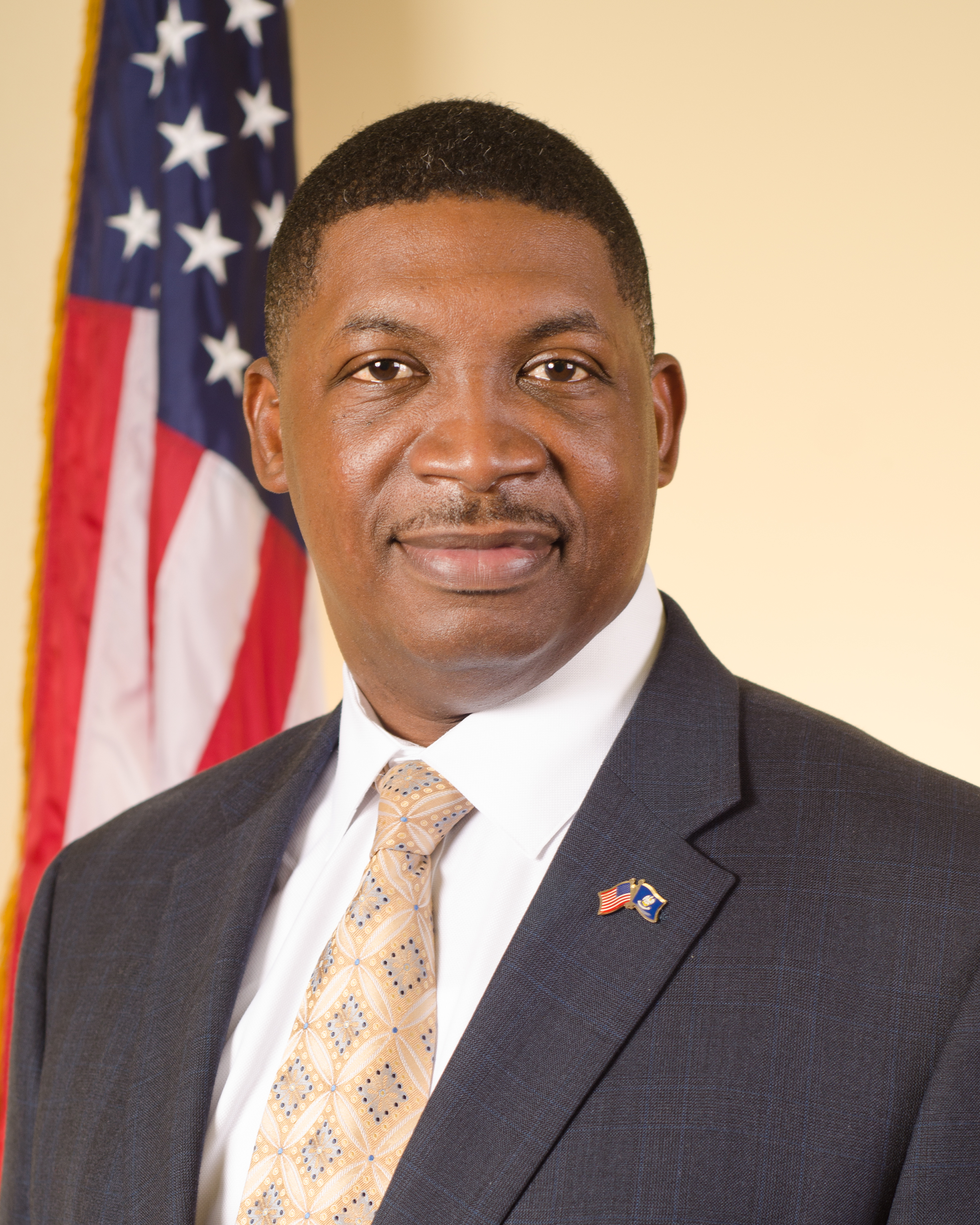
A great honor was bestowed on me and my family when Governor John Bel Edwards appointed me as Secretary of the Department of Transportation and Development. As Secretary, I intend to use this platform to position the department to receive additional dollars being invested in our state's multimodal transportation infrastructure. As with most new agency heads, I have appointed a few new additions to the executive staff and expect there will be some philosophical differences compared to the previous administration, but the day to day services will not change. They are critical to DOTD's success in delivering an infrastructure agenda.
Having worked at DOTD for more than 11 years, safety remains a top concern of my Executive leadership team. Just recently, DOTD took extra steps to promote safety during Work Zone Awareness month in April using social media, traditional media and public service announcements. We are also planning to promote other safety measures as well in the coming months. Investing in infrastructure improvements that drive safety such as cable barriers and using the newest technology to provide travel information are also vital to providing valuable, tangible services.
In this edition of the DOTD newsletter, we have highlighted some areas of safety concerns, such as work zones, driving in adverse weather and the importance to treating railroad tracks with respect.
It is exciting to step into this role with Governor Edwards, who supports transportation and infrastructure. In the first 100 days of his administration, he has demonstrated that in a very compelling way. With the Governor’s leadership and backing of transportation, public support for infrastructure at an all-time high, and with the efforts of the hard-working employees of DOTD, I look forward to many accomplishments in the coming years.
Keep safe,

Shawn D. Wilson, Ph.D.
Secretary
Work Zone Awareness - It's Everybody's Business
by Bambi Hall
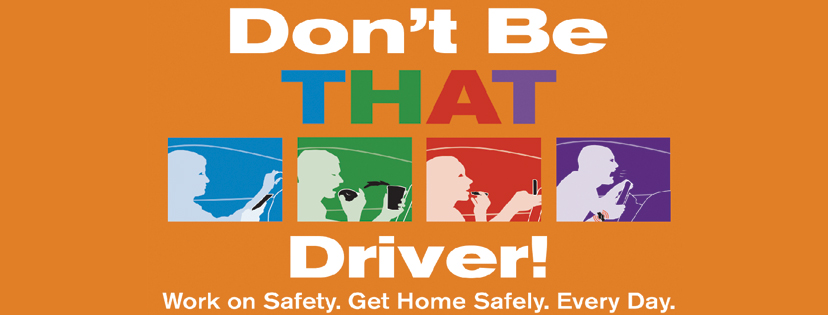
April is National Work Zone Safety Awareness Month. Each year, key stakeholders and state departments of transportation coordinate and participate in an annual spring campaign to encourage safe driving through highway work zones. This year's theme, "Don't Be That Driver! Work on Safety. Get home Safely. Every Day.” was developed to reinforce the message that motorists should be constantly alert and prepared for any changes in and around work zones. Events around the country were held April 11-15 for "National Work Zone Awareness Week."
“As transportation professionals, we all have a common goal: To stress the importance of driving safely, especially through work zones,” said Dr. Shawn Wilson, secretary of the Louisiana Department of Transportation and Development. “We believe this effort will help reduce the number of injuries and fatalities that occur on Louisiana’s roadways.”
Nationwide, drivers come in contact with a work zone on the average – every 50 miles. In Louisiana, DOTD has tripled the number of projects let to construction, so that’s triple the amount of work zones out Louisiana roadways – more orange signs, cones and barrels for drivers to pay attention to. During the week of observance, highway construction officials around the nation work to educate the motoring public in order to reduce risks of crashes, deaths and injuries in work zones. To recognize those lost in work zone incidents, cone memorials are often erected at transportation offices marking the number of fatalities that occurred in the last recorded year. In 2014, 669 fatalities were recorded – 13 in Louisiana. The data gathered is the most recent year for which figures were available from the federal Fatality Analysis Reporting System (FARS).
The number of fatalities on United States roadways continues to increase each year; however, most incidents can be prevented. Some things that drivers can do to prevent work zone incidents are pay attention to signage and detours, obey reduced speed limits, avoid all distractions in the vehicle, don’t operate any vehicle while impaired, ensure that every passenger is properly buckled up in the front and rear seats, and report any unsafe driving to local law enforcement.
Since 1999, the American Association of State Highway and Transportation Officials, the Federal Highway Administration and the American Traffic Safety Services Association have coordinated and sponsored National Work Zone Awareness Week.
For more information about Work Zone Awareness, log onto www.destinationzerodeaths.com. For information on DOTD, please visit www.dotd.la.gov, email dotdcs@la.gov, or call DOTD’s Customer Service Center at (225) 379-1232 or 1-877-4LADOTD (1-877-452-3683). Business hours are 7:30 a.m. - 5 p.m., Monday through Friday.
Motorists can access up-to-date travel information by dialing 511 or by visiting www.511la.org. Out of-state travelers can call 1-888-ROAD-511 (1-888-762-3511).
Turn Around, Don't Drown
by Cindy Dorfner
“Turn Around, Don’t Drown” is not only a clever phrase, it’s a National Weather Service campaign aimed at keeping people from walking or driving through flood waters. We’ve all heard it – especially lately since Louisiana has been seeing more than its fair share of rain, causing flash flooding in low-lying areas.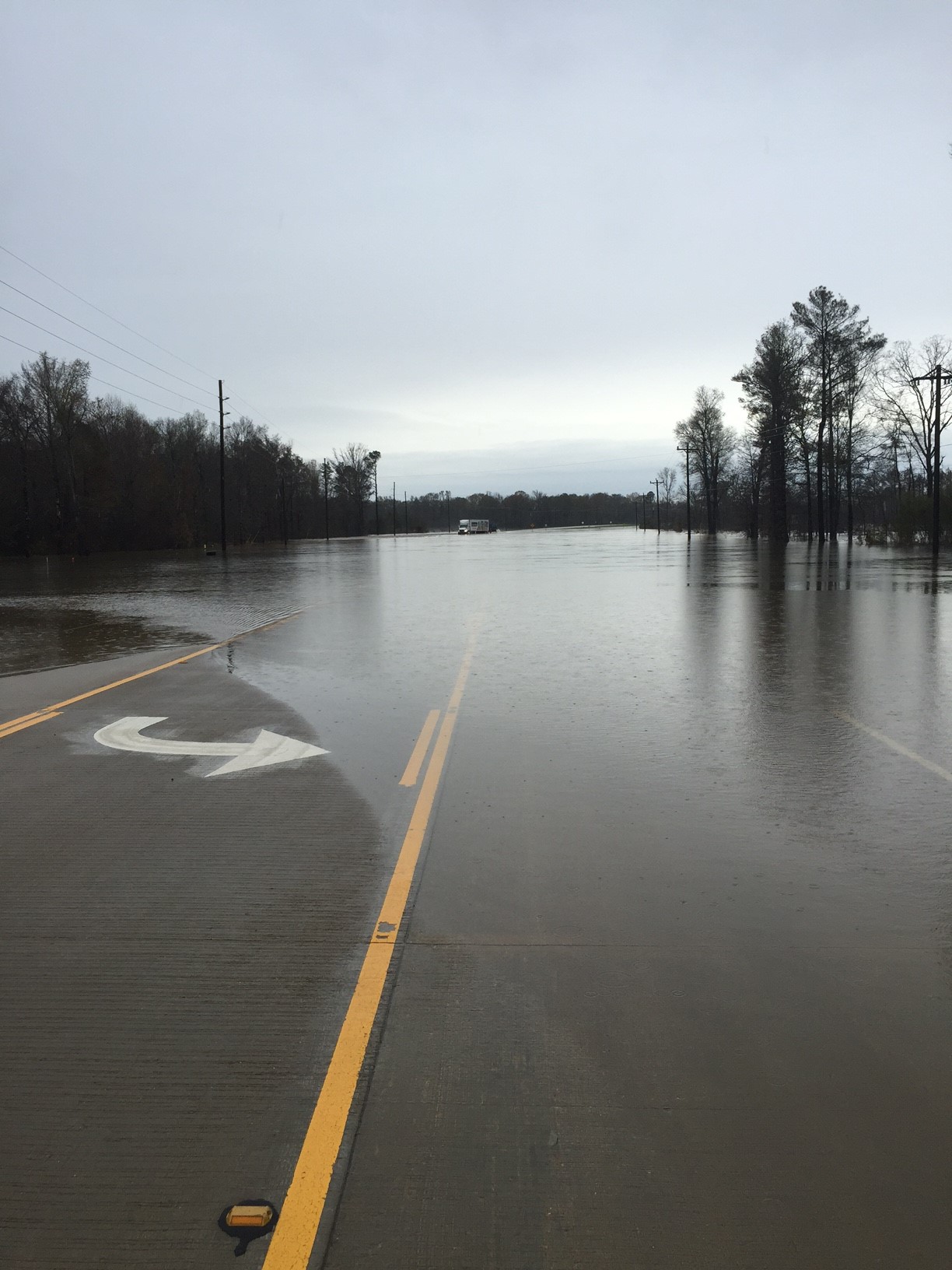
The idea is that if you see standing/high water as you’re driving, don’t take your chances and drive through it, because the reality is that you really don’t know the depth of that water, or the condition of the roadway under the water.
Did you know that:
It only takes six inches of water to reach the bottom of most passenger cars?
A mere 12 inches of water has the ability to float many passenger cars?
Two feet of rushing water can carry away most vehicles, including sport utility vehicles and trucks?
“Each year, more deaths occur due to flooding than from any other severe weather related hazard,” according to the National Weather Service’s webpage. “The Centers for Disease Control report that over half of all flood-related drownings occur when a vehicle is driven into hazardous flood water. The next highest percentage of flood-related deaths is due to walking into or near flood waters. Why? The main reason is people underestimate the force and power of water. Many of the deaths occur in automobiles as they are swept downstream. Of these drownings, many are preventable, but too many people continue to drive around the barriers that warn you the road is flooded.”
Sometimes, motorists might see others driving through standing water and think it’s OK for them to follow. That’s what recently happened to Yolanda Jones, who works for the Louisiana Department of Transportation and Development in Bossier City.
Ms. Jones was driving through Shreveport in her 2011 Honda Accord when she saw the vehicles in front of her passing slowly through high standing water.
“It was raining and water was covering a valley section of road, but I thought that since others were making it through, I could drive through it,” she said. “As I started to pass through it, water made it up to the door of my car and it started stalling. All of a sudden, my lights started flickering and then it felt like I was floating.
“I was so scared wondering what was going on,” Ms. Jones said. “I can’t swim and the last thing I needed was for my car to float away with me in it.”
She said once the water started coming into the car, she knew she had to get out. When she opened the door and got out, the water was up to her knees. Thinking her car had just stalled, Ms. Jones called a mechanic friend, who sent a wrecker to pick her up. Her concern at that point was that it was going to take a while for her car to dry out and she wondered about the smell. Little did she know, just days later, her insurance company would deem her vehicle a total loss because water got into the computer system of her car.
“Thankfully, I had insurance because I don’t know what I’d have done without it,” Ms. Jones said. “And even more so, thankfully despite my poor decision, the only thing I lost was my car.”
The bottom line is that officials want motorists to heed signs and never take the risk of driving through high water … Turn Around, Don’t Drown.
Rail Safety Tips From Operation Lifesaver
- Trains and cars don't mix. Never race a train to the crossing — even if you tie, you lose.
- The train you see is closer and faster-moving than you think. If you see a train approaching, wait for it to go by before you proceed across the tracks.
- Be aware that trains cannot stop quickly. Even if the locomotive engineer sees you, a freight train moving at 55 miles per hour can take a mile or more to stop once the emergency brakes are applied. That's 18 football fields!
- Never drive around lowered gates — it's illegal and deadly. If you suspect a signal is malfunctioning, call the 1-800 number posted on or near the crossing signal or your local law enforcement agency.
- Do not get trapped on the tracks; proceed through a highway-rail grade crossing only if you are sure you can completely clear the crossing without stopping. Remember, the train is three feet wider than the tracks on both sides.
- If your vehicle ever stalls on a track with a train coming, get out immediately and move quickly away from the tracks in the direction from which the train is coming. If you run in the same direction the train is traveling, when the train hits your car you could be injured by flying debris. Call your local law enforcement agency for assistance.
- At a multiple track crossing waiting for a train to pass, watch out for a second train on the other tracks, approaching from either direction.
- When you need to cross train tracks, go to a designated crossing, look both ways, and cross the tracks quickly, without stopping. Remember it isn't safe to stop closer than 15 feet from a rail.
- ALWAYS EXPECT A TRAIN! Freight trains do not follow set schedules.
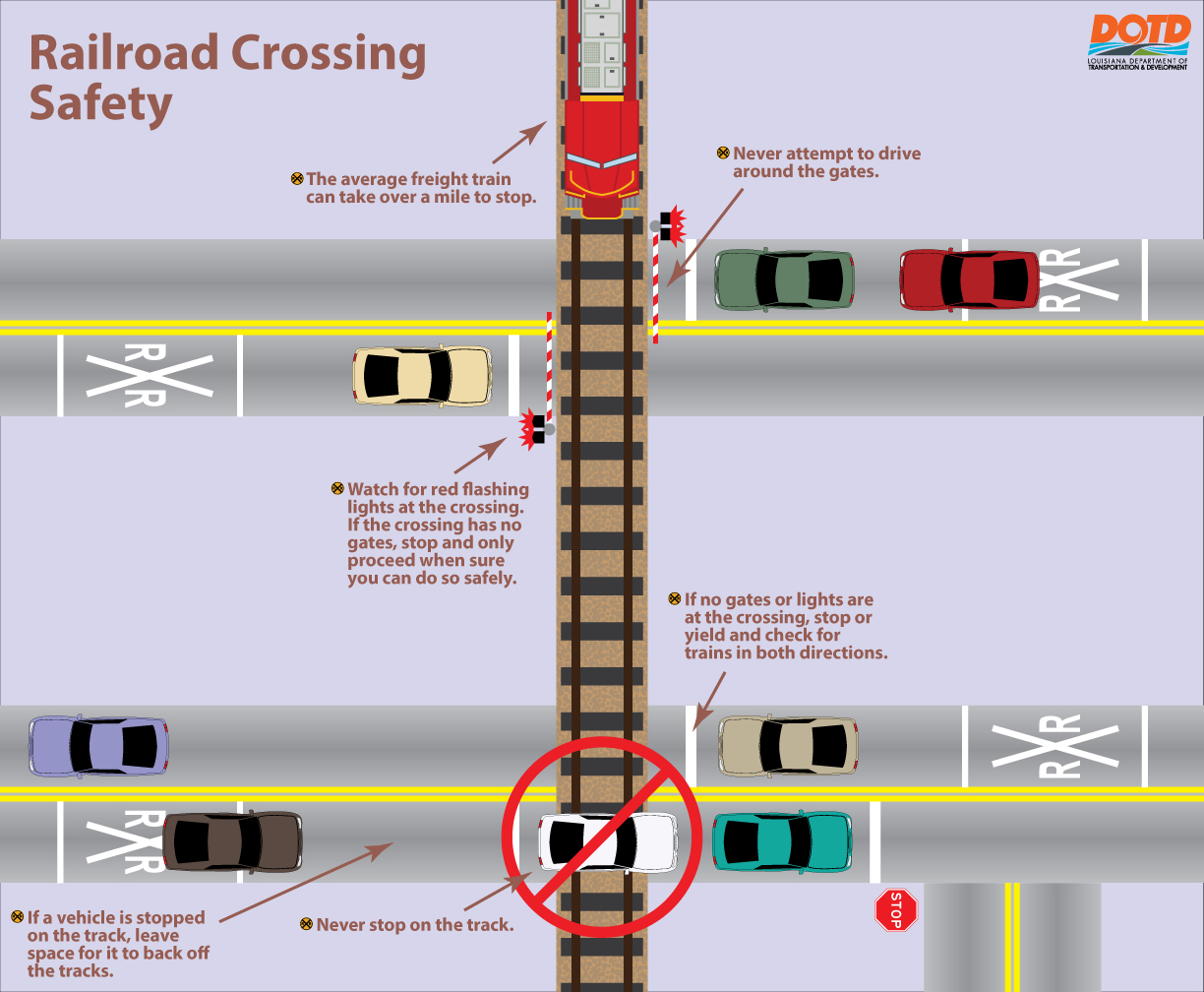
TOP OF PAGE
June 1 is the start of hurricane season. Here are some recommend steps you can take to be prepared in the event of catastrophic weather.
Determine your risk – Know what’s coming, how it can affect you and how to handle it.
Know your zone – Find out if you live in a storm surge evacuation zone.
Have a plan – Identify a safe place for your family outside of a storm surge evacuation zone. Put it in writing, so that family members will have the plan in hand. Include your pets in your plan.
Know your coverage – Double-check your insurance to make sure you have the coverage you may need for repairs.
Buy proper supplies ahead of time – Stock up on batteries, water, non-perishable foods, and any medications needed. Have enough for at least one week.
Strengthen your home – If you plan to ride out a storm, make sure your home is in good repair and up to local hurricane building code specifications. Have the proper plywood, steel or aluminum panels to board up windows and doors.
Keep your family safe – Locate a safe room or the safest areas in your home for each hurricane hazard.
Take First Aid, CPR, or disaster preparedness classes – Taking these classes can make all the difference when the next disaster strikes.
Remember, it only takes one storm to change your life!
by Anastasia Semien
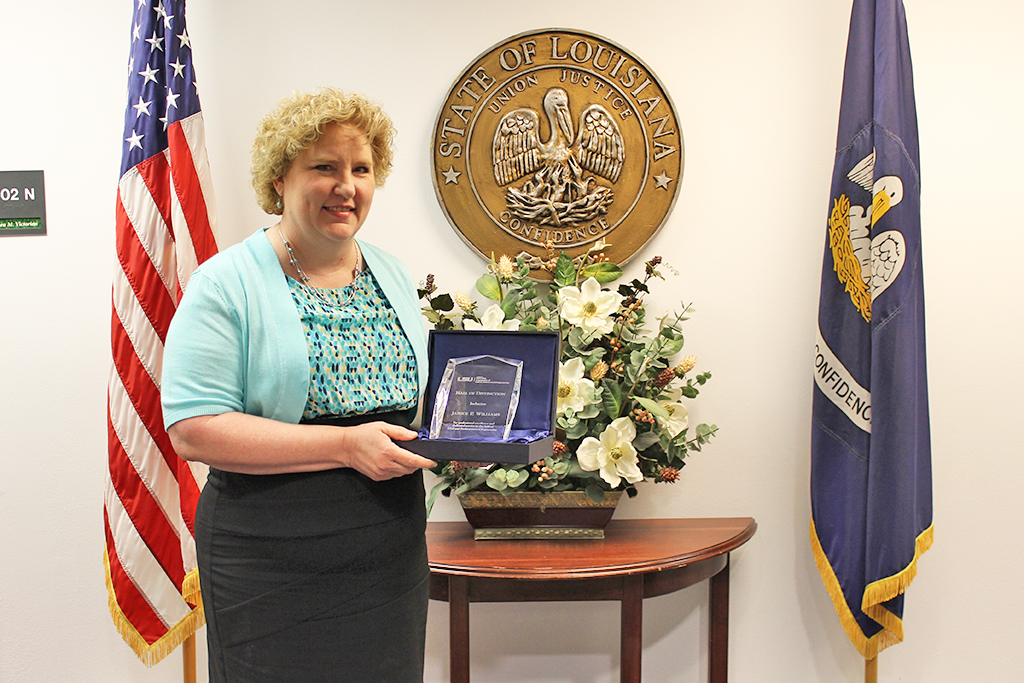 Louisiana Department of Transportation and Development Chief Engineer Janice P. Williams, P.E. was recently selected as a 2016 inductee into the LSU Department of Civil and Environmental Engineering Hall of Distinction.
Louisiana Department of Transportation and Development Chief Engineer Janice P. Williams, P.E. was recently selected as a 2016 inductee into the LSU Department of Civil and Environmental Engineering Hall of Distinction.
Williams, who has spent her entire career at DOTD, said she is “deeply honored and truly humbled” by this selection.
“To be chosen for this award by my peers in my profession is tremendously gratifying,” she said.
After earning her bachelor’s degree in civil engineering from LSU in May 1985, Williams began her career the next month as an engineer in training in DOTD’s Road Design section. Thirty-one years later, she has managed more than 1,200 projects totaling $2.3 billion. Williams became DOTD’s first female chief engineer in April 2014.
In this position Williams provides guidance to a staff of more than 500 engineers, engineering technicians and support staff and is responsible for establishing engineering standards, policies, and procedures that guide project delivery, construction and preservation of all transportation-related projects and systems.
“My work at DOTD has been challenging and enjoyable most of the time. I have been given opportunities to work on some really interesting projects over the years,” Williams said.
In 2011, Williams received the Charles E. Dunbar, Jr. Career Service Award, the highest honor classified state employees can receive. It is given for commitment to classified service, contributions toward workplace improvement, personal initiative and volunteer community service.
“I am grateful for the opportunities I’ve had to make a difference and work with so many terrific people during my career,” she added.
Williams said her education at LSU prepared her to take on the challenges of a transportation career by providing a foundation of solid engineering principles and discipline for completing difficult assignments. She encourages young people wanting to follow in her footsteps to, “be someone other people can depend on.”
“Everything starts with integrity. Without integrity not much else you do will count. Take responsibility for your actions and own your assignments, whatever they are, whether you like them or not. Be bold, and don’t be afraid of making mistakes.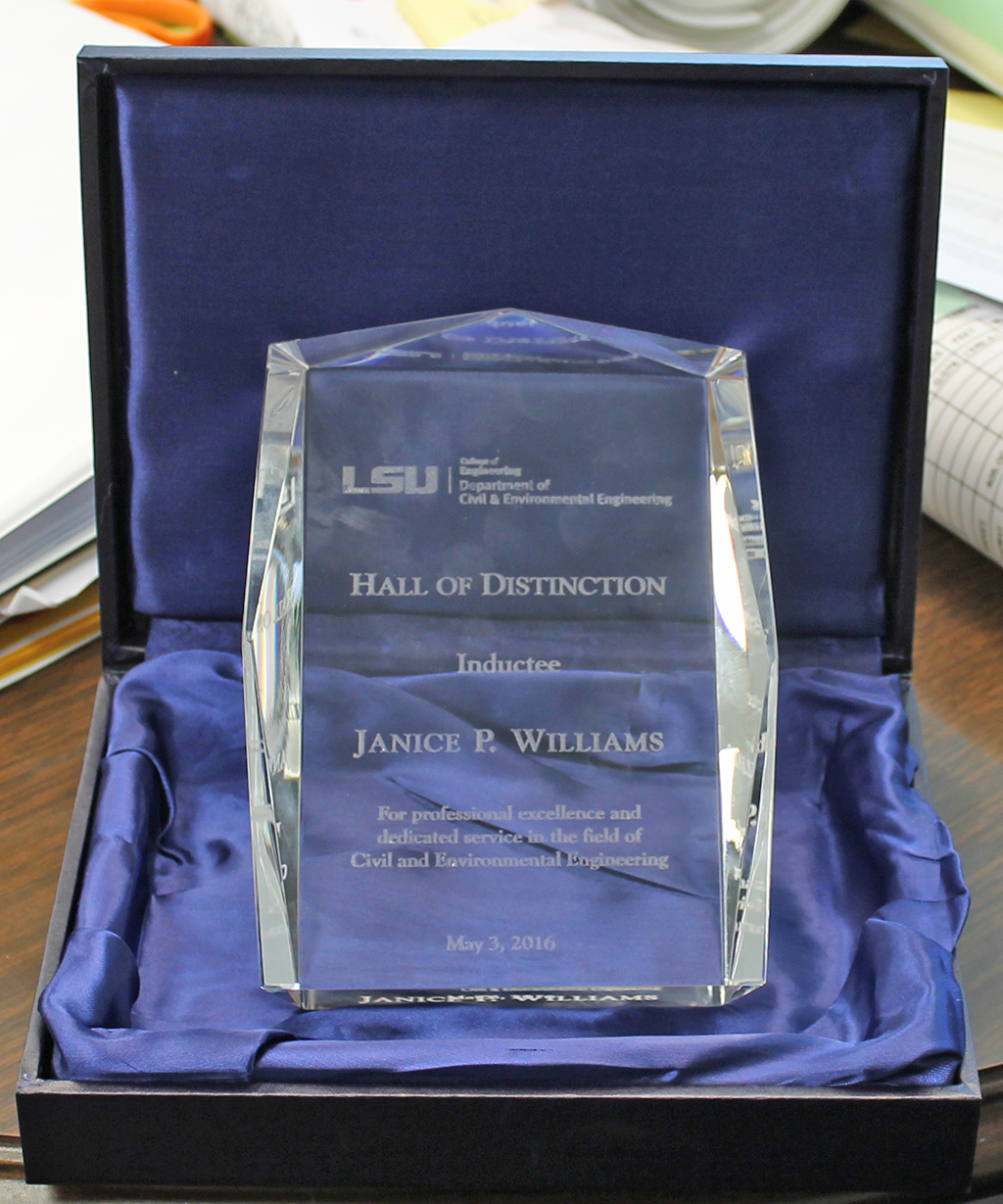
“In engineering you must be able to work with a team. Be the person other people want on their team. Help others anytime you can even when you don’t have to. Be a credit to your profession. As a civil engineer you are responsible for the safety and welfare of others with your work-- never forget what a solemn duty and privilege that is,” she added.
Williams was honored along with Dr. Akram N. Alshawabkeh, P.E., F. ASCE at a banquet held on May 3 at the Lod Cook Alumni Center. Former DOTD Secretary Sherri LeBas was inducted into the Hall of Distinction in 2010.

Your source to deciphering "engineer" speak.
J-Turn: Intersection feature which functions by redirecting through- and left-turning traffic on the side street approach to turn right, proceed to the nearby U-turn, and then return to its original course.
Riprap: Materials, usually rock, used to protect soil, bridge abutments, or other objects near water. Riprap prevents water from eroding or scouring these objects.
Expansion joint: A separation in a building, road, sidewalk, bridge, or other structure. Expansion joints allow construction materials to expand or contract, absorb vibration, and/or move due to outside forces.
(Summary of bid results for projects over $1 million between January and April)
Acadiana Region: Acadia, Evangeline, Iberia, Lafayette, St. Landry, St. Martin, St. Mary and Vermilion
Projects include road overlays, bridge replacement, pavement marking replacements, and roundabout construction. Total investment: $10.4 million
Capitol Region: Ascension, Assumption, East Baton Rouge, East Feliciana, Iberville, Pointe Coupee, St. James, West Baton Rouge and West Feliciana
Central Region: Sabine, Vernon, Winn, Grant, Natchitoches, Avoyelles and Rapides
Projects include upgraded roadway and drainage, a bike lane, sidewalk reconstruction, new lighting, and landscaping. Total investment: $2.8 million
Greater New Orleans Region: Jefferson, Lafourche, Orleans, Plaquemines, St. Bernard, St. Charles and Terrebonne
Projects include paving, emergency crossing upgrades, toll booth removal, and bridge painting. Total investment: $34.7 million
Northeast Region: East Carroll, Jackson, Lincoln, Madison, Morehouse, Ouachita, Richland, Union and West Carroll
Northwest Region: Bienville, Bossier, Caddo, Claiborne, Desoto, Red River and Webster
Northshore Region: Livingston, St. Helena, St. John, St. Tammany, Tangipahoa and Washington
Projects include roadway rehabilitation, levee path enhancements, roundabout construction, and median cable barrier installation. Total investment: $12.2 million
Southwest Region: Allen, Beauregard, Calcasieu, Cameron and Jefferson Davis
Mid-northeast Region: Caldwell, Catahoula, Concordia, Franklin, LaSalle, and Tensas
TOP OF PAGE